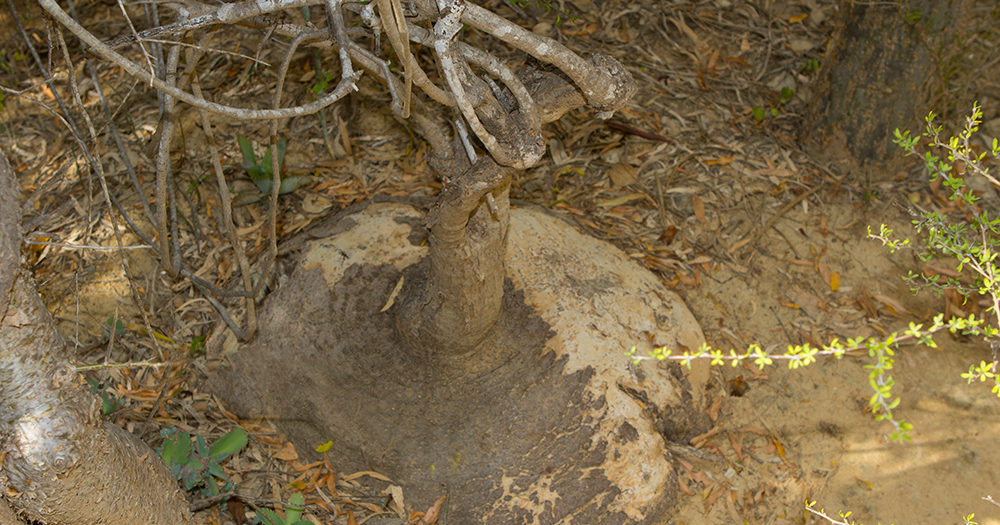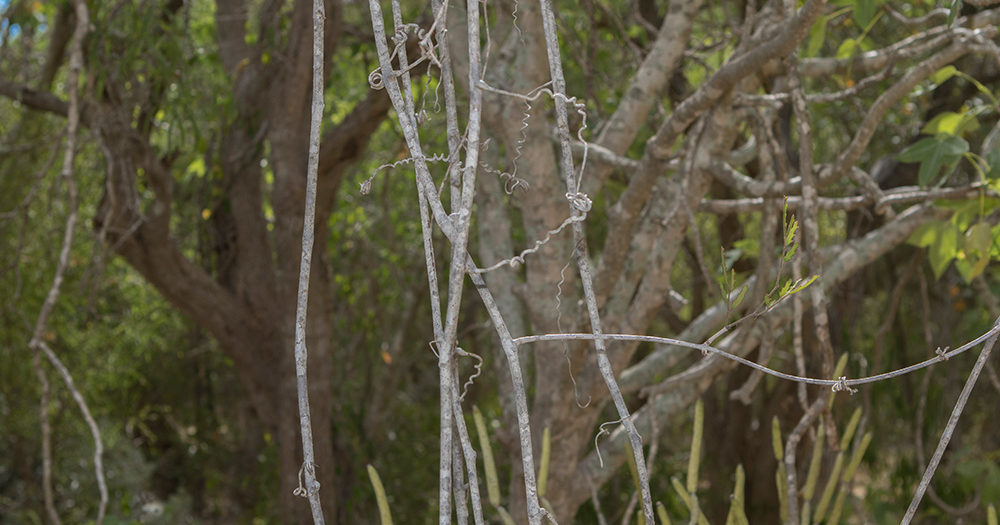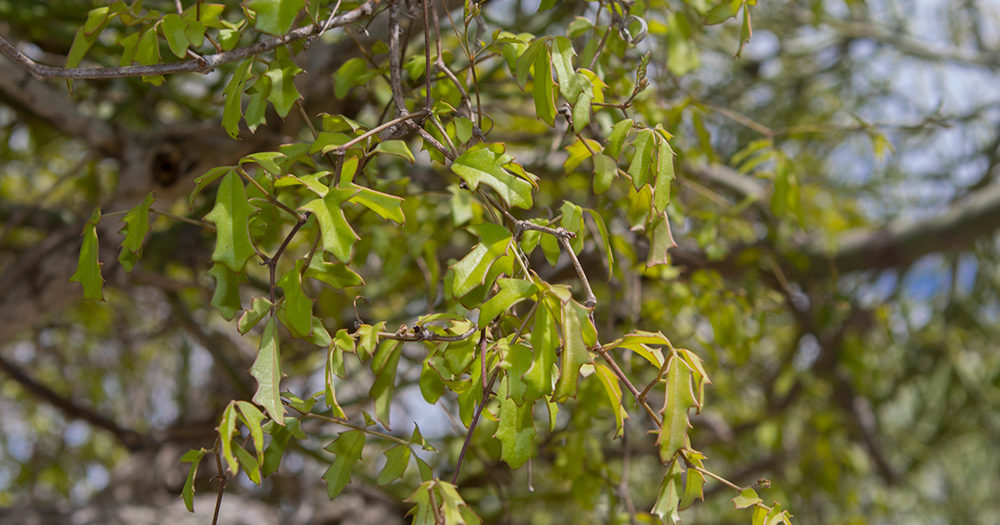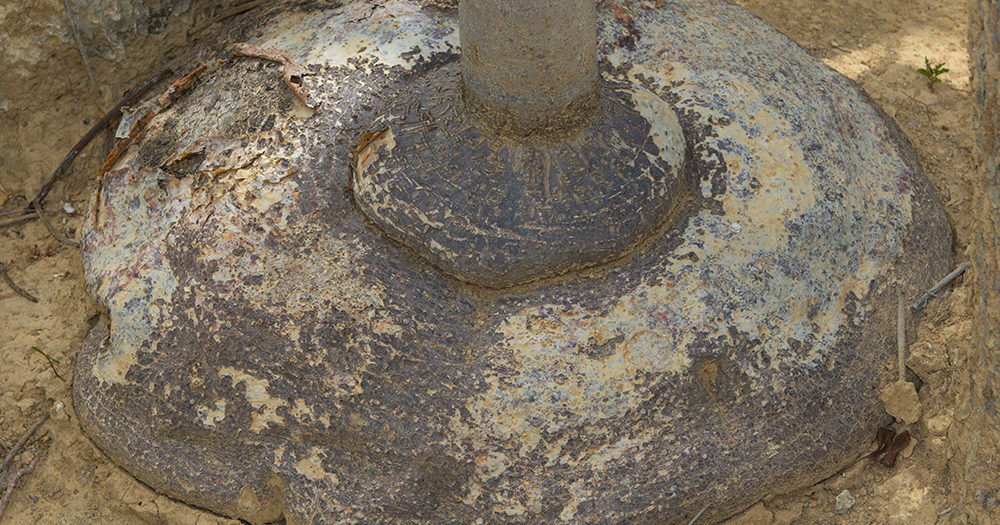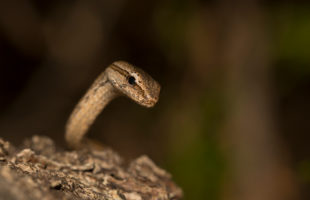Madagascar’s south put forth many quirky, mostly water saving plants. An especially strange and unique plant is Cyphostemma montagnacii. The shape of this plant seems to be not of this world: A small, gnarly stem merges into long vines. Indeed this strange plant belongs to the grapevine family. Its branches need a tree which they can climb up and which supports them. The person who described all this for the first time was French botanist Bernhard Descoings. He dedicated the name to his compatriot Montagniac, who had been director of the agricultural service in Toliara in this time. It was 1962.
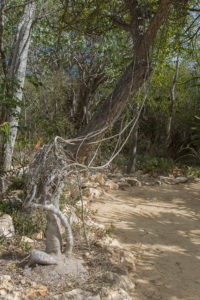
The main distribution area of Cyphostemma montagnacii thus is southern Madagascar, south of the big city Toliara (Tuléar) to the bay of St. Augustin and along Onilahy river eastwards. There shall be some specimen in Tsimanampetsotsa, too. The whole distribution area is not higher than 150 m above sea level. Earlier grown with spiny forests, today the landscape around Toliara is widely bleak due to slash-and-burn agriculture and logging. Just some bushes and grass cover the hard limestone soil. Here and there, some residues of spiny forests have been left.
Cyphostemma montagnacii has adapted perfectly to the dry landscape of spiny forests. Its leaves are small and fleshy. In November, the leaves sprout relatively quick, and the plants produces small yellow flowers. In the beginning of February, the long vines already carry small, round fruits. Those are edible and taste sweetish, but the Malagasy people rarely eat them. The seeds are one and a half to two centimeters in length, grooved like a coffee bean on one side and have a corky surface. Already in March, everything is over and the tree almost bare again.
The secret of Cyphostemma montagnacii is the lower part of the plant: The short, thick stem ends in a bulbous tuber which forms a huge cavity inside the soil. During the rainy season, the empty space is filled with water. One old plant can save more than 50 liters in one season. The tuber is up to one and a half meters deep in the earth. This way, Cyphostemma montagnacii survives the long dry season which may last for months in southern Madagascar. The Malagasy name of the plant is “Mangeboka”. It means as much as “maintaining”: A good name for a succulent plant.
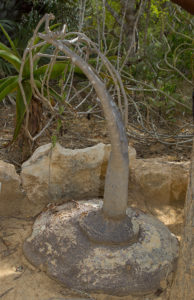
Sometimes during very hard droughts, the people of Mahafaly and Antandroy open the tubers to drink the water, making the plant a life saver. But who tries to take away a full grown Cyphostemma montagnacci will be disappointed: It is hardly possible to dig out the big tuber without damaging it. A damaged tuber kills the plant, because their water tank runs dry soon – they will wither.
For years, people have been trying to reproduce Cyphostemma montagnacii for commercial export as ornamental plant. Madagascans from poor families collect single plants, mainly young seedlings, in the wilderness and sell them for small money to dealers. In 2011, a study was published which was about the occurence of some south Madagascan, commercialised succulent plants. The authors found out that Cyphostemma montagnacii only survived with 25 individuals per hectar in its natural habitat. Only 200 km² even were able to be appropriate habitat at all. People suggested to put this plant on the IUCN red list of threatened species as “threatened by extinction”. However, still today Cyphostemma montagnacii is not even existing on the red list. People are still allowed to deal with it since it is part of the Convention on International Trade in Endangered Species of Wild Fauna and Flora (CITES) appendix B. As adaptable as it seems, Cyphostemma montagnacii scheint is very prone to disturbed habitats. It cannot survive in degraded vegetation or burnt fields. Some protected areas such as Arboretum Antsokay have been trying for years to safe the plant from extinction. May it happen?
 MADAMAGAZINE Your Magazine about Madagascar
MADAMAGAZINE Your Magazine about Madagascar
